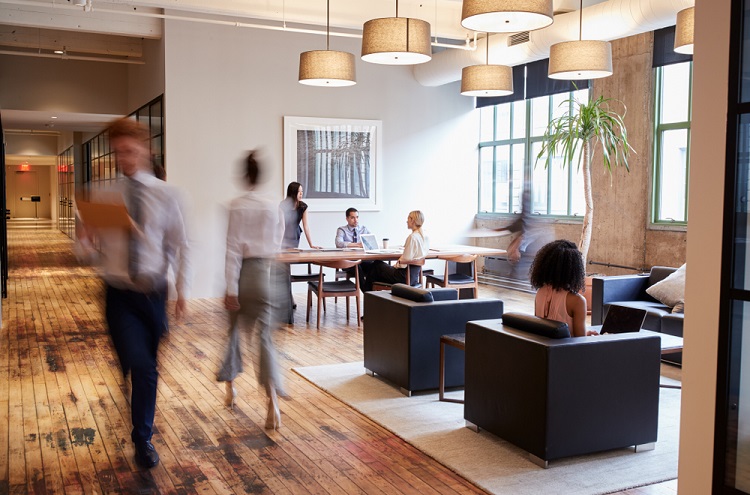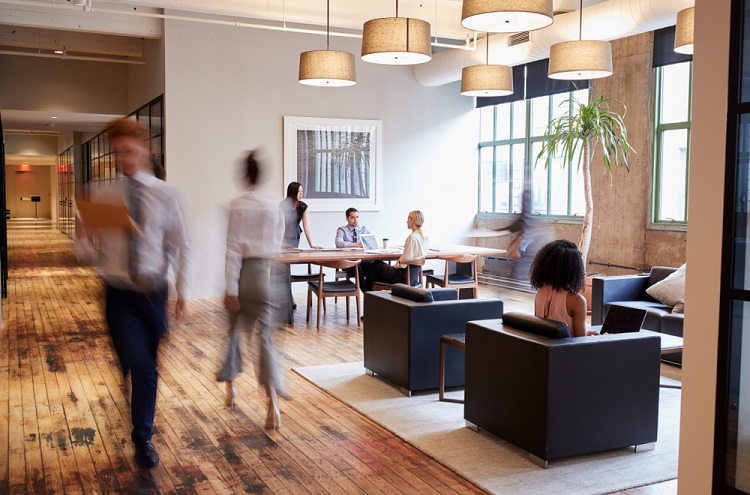How coronavirus will impact future workplaces
Will COVID-19 have a long-term impact on office design?
Martin Goldstein //May 27, 2020//


How coronavirus will impact future workplaces
Will COVID-19 have a long-term impact on office design?
Martin Goldstein //May 27, 2020//

Around Colorado, companies and their employees have had to quickly adapt to working entirely remote. Despite the challenges and occasional technical glitches, organizations are making it work – many are even finding new ways to maximize their productivity.
While we are all adjusting the best we can, there is a growing sense that things will not be the same after this. The big question is: How will COVID-19 influence office design going forward?
Great office design has always been largely based on people – what inspires them and supports them to be at their best. That will not change in a post-COVID-19 world. But the things people need to feel safe and supported in their new reality will.
So, are we all headed for a return to single-occupancy offices or high-walled cubicles? Probably not, but here are a few changes that may impact the workplace of the future:
A renewed premium on personal space
COVID-19 has challenged the perception of what personal space is – and how much of it we need. I believe we’ll see a strong desire to spread people back out. This may cost some leasing or tenant improvement dollars, but it’s all a worthy sacrifice to make in order to preserve each organization’s cultural balance, which may start to come with a premium.
Search for quiet
If there’s one thing I have come to value about temporarily working from home, it’s sound – or lack thereof. With the exception of the occasional family interruption, heads-down work has been much quieter. I expect once we return to the office, that we’ll see a focus on implementing smarter, more strategic soundproofing strategies that limit distractions and promote the productivity many found at home.
More home work
Depending on the success of this large-scale remote-working experiment, it is possible we’ll see more flexible work-from-home policies. As it turns out, video chat – and the ability to read facial expressions – can actually be handier than a phone call in many instances. We could see fewer in-person meetings, which might be significantly more efficient than the relentless rush around the city.
Less space sharing
If more professionals begin to work from home, one might think we could see less need for individual workstations and more free address hoteling. However, sharing workstations might require too much contact with other people’s germs and could become too taboo for more hoteling to make sense. For the same reason, it’s possible that many mobile warriors might not frequent the co-working spaces or local coffee shops as much as before to get their work done, due to the high traffic and concerns about increased contact with unknown people.
Greater emphasis on health and wellness
Health and wellness have been increasing in significance in office design for some time. That will only increase now, prompting additional – and partly mechanical – changes. Air purifiers with HEPA-rated filters will likely make their way into many more offices while landlords will evaluate how current heating, ventilation and air conditioning systems can be optimized to create an environment that limits the transmission of infectious diseases. We may also see more building features designed to limit contact – anti-microbial hardware or increased touch-free doors, etc.
It’s impossible to predict exactly what will come from moments like this, but there will be new questions for designers and stakeholders to ask after we all return to the office and try to get back to normal. Depending on the work each company needs to do each day (and personal interpretation), the answers will vary.
Despite all of this, I’m confident that the office will survive, and even thrive. Maybe this next generation of workplace design will bring us closer together despite spacing apart a bit more, and perhaps our interactions will become more meaningful than they have been.
Martin Goldstein is the principal of Venture Architecture, a Denver-based firm whose discovery-focused design and delivery process results in more meaningful space.
























